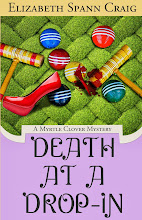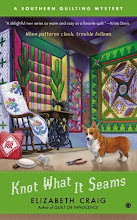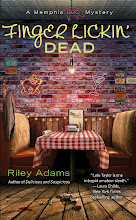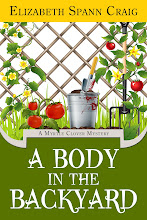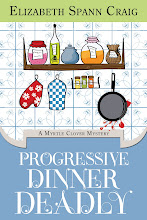Sometimes a task can be easier if you make yourself a checklist to ensure you're covering all your bases. With that idea in mind, here's a brief checklist you might want to consult before sending your manuscript off into the big, bad world of editors and agents. Or, it might be more helpful to think about these things while you're still plotting your novel.
Genre: Have you got a clear genre for your book? Thriller, cozy, police procedural, hard boiled? If you can’t identify your genre to an agent or editor, your manuscript won’t go too far.
Have you followed the rules of writing a mystery?: (see Twenty Mystery Writing Rules )
Setting: Frequently, setting plays a role in a mystery novel. It limits the number of suspects if it’s a remote island, for example. For a thriller, you may want a faster-paced, big-city environment. See how setting plays a role in your book. If it doesn’t, you may want to consider tweaking your manuscript.
An Engaging Beginning: Have you started out with a bang? Or have you started out with some messy backstory that no one wants to wade through at the beginning of your book? Make sure you’ve lured your reader in from the very beginning so they’ll want to stick with you. Think twice before using a prologue or using flashbacks at the beginning of your manuscript.
A Murder that Happens in First 50 pages or so: Don’t wait until you’re half-way through the book for a body to be discovered. Your reader may give up on you.
Protagonist: This will be your sleuth or police detective. Are they likable people or at least people interesting enough for your readers to want to spend time with? What special talents do they have that make them capable of solving the crime? Are they easy to talk to? Have they spent many years in the police department? What sets them apart?
Suspects: Do your suspects all have motive, means, and opportunity? Does their motive make sense and is it believable? Have you given the reader a chance to meet each suspect and learn about them? Have your suspects misdirected your readers and provided some red herrings? Have they lied to the sleuth and the reader? Do they have secrets? Do they have some depth?
Murderer: The killer will need to be fairly clever so he isn’t caught right away. Is your culprit believable but not obvious? If the murderer ends up being the least likely candidate, have you made his motivation realistic?
Clues: The clues need to be made available to the reader as well as the detective. You have to be fair with your reader in providing them the clues, but make sure they don't stand out too obviously in the scene. If they do, think about pointing the reader's/detective's attention in another direction, quickly. There also needs to be more than one clue--preferably three or more.
Red Herrings: Make sure your red herrings don't last the entire length of the book---that's generally considered unfair. Red herrings are a good diversion to mislead your reader, but they can be taken too far. If the entire focus of your murder was blackmail and the ensuing investigation is wrapped up with blackmail victims and scurrilous gossip: and then the real motivation ends up being revenge or obtaining life insurance money, most readers will end up wanting to throw your book in frustration.
Victims: You know you need at least one. Do you need two? Do you need more? (Remember that some genres, like cozies, generally don’t have a high body count.)
Element of Danger: Does your sleuth or detective know too much? Are they getting too close to the truth? Adding some action or a touch of danger can help with sagging middles of books.
Exciting Chapter Endings: Don’t let your reader put down your book and go to sleep. Do you have some exciting chapter endings so they’ll want to go on reading?
Resolution: Did you catch the bad guys in the end? Did you tie up all the loose ends that you created? Did you explain how the sleuth/police followed the clues?
Errors: Have you checked all the grammar, spelling, mechanics? And double-checked it? Have you trimmed any pointless dialogue, scenes that go on too long? Everything you write should have a purpose….there’s no time to dilly-dally. Double-check to make sure you haven't made any major changes in your manuscript--did your character start out being middle-aged and then end up being older or younger? Did your story start out during the dog days of summer and then suddenly change to spring? Make sure you read your manuscript from start to finish to eliminate any content errors.





